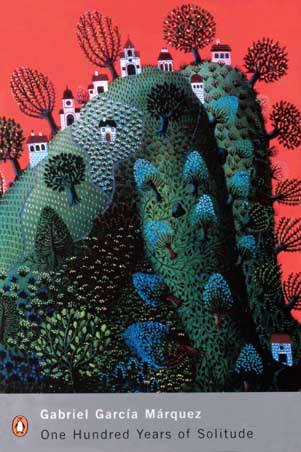Saturday, March 31, 2018
Favorite Works Thus Far?
As we are winding down our senior year with only a handful of days left this year, I was wondering what has been everyone's favorite works to read thus far. One of my favorite novels so far this year was actually one of the first, Marquez's One Hundred Years of Solitude. Marquez writes in such a way that seemed to always keep me interested, and the novel was so absurd that it was almost comical at many points. Candide was also one of my favorite things to read this year because much like One Hundred Years of Solitude it had its absurd moments and was pretty plot driven. I also enjoyed Oedipus, as I had roughly heard the story many times but finally got to read it in class. Also, Hamlet was enjoyable as reading Shakespeare every year is always a pleasure. Please let me know what has been your favorite works to read so far this year!
Ralph Ellison
For my independent study book, I chose to read Invisible Man by Ralph Ellison. Most of us actually read the first chapter of this novel in sophomore year English with Mr. Shipman. I was wondering what you guys chose to read for your independent studies. Also, enjoy some fun facts about Ellison and his novel.
1. Ellison originally planned to be a musician but had to leave music school as he could not afford it after a few years.
2. Invisible Man actually took seven, and he began writing it in 1945 as a cook in the United States Military in World War II.
3. Eliot actually published the first essay as a short story in Horizon magazine in 1947, and we read the first chapter as a short story sophomore year.
4. The FBI had files on him due to his involvement in the civil rights movement and relationship with the communist party. The FBI actually had 1400 pages of information on Ellison.
5. In 2013, the book was actually banned in high schools in 2013 but was quickly reversed after national and local protests.
1. Ellison originally planned to be a musician but had to leave music school as he could not afford it after a few years.
2. Invisible Man actually took seven, and he began writing it in 1945 as a cook in the United States Military in World War II.
3. Eliot actually published the first essay as a short story in Horizon magazine in 1947, and we read the first chapter as a short story sophomore year.
4. The FBI had files on him due to his involvement in the civil rights movement and relationship with the communist party. The FBI actually had 1400 pages of information on Ellison.
5. In 2013, the book was actually banned in high schools in 2013 but was quickly reversed after national and local protests.
Jean / Hans Arp
When doing research on Andy Warhol and pop art across the 1950s and 60s, I came across a pretty interesting sculptor, painter, and poet by the name of Jean Arp. Jean Arp was a German-French pop artist, who when speaking in French referred to himself as Jean, but when speaking French referred to himself as Hans. Arp was a found member of the DaDa movement in 1916, and his work appeared in a surrealist art exhibition. Arp moved towards poetry and essays in the later parts of his life. Here are some of my favorite works by him.

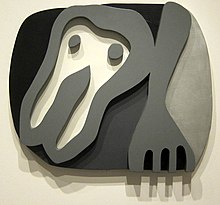


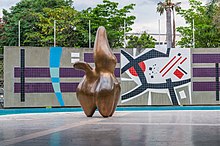 |
 |
Jenny Holzer
During some of my research, I came across another conceptual artist by the name of Jenny Holzer. Holzer was born in 1950, and like many of her contemporaries, she worked on art that was untraditional and incorporated text to create a message. She used LED displays and illumination to project words onto billboards, buildings, and other public structures. She also utilized painted posters and benches, photographs, signs, and even a car for BMW. Her work is really cool, and I attached some of her pieces below.
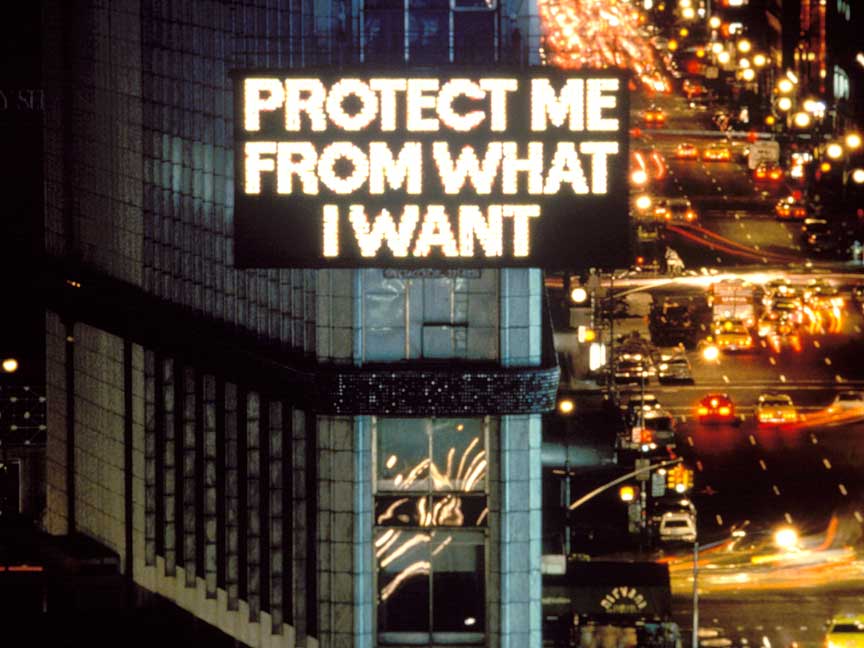
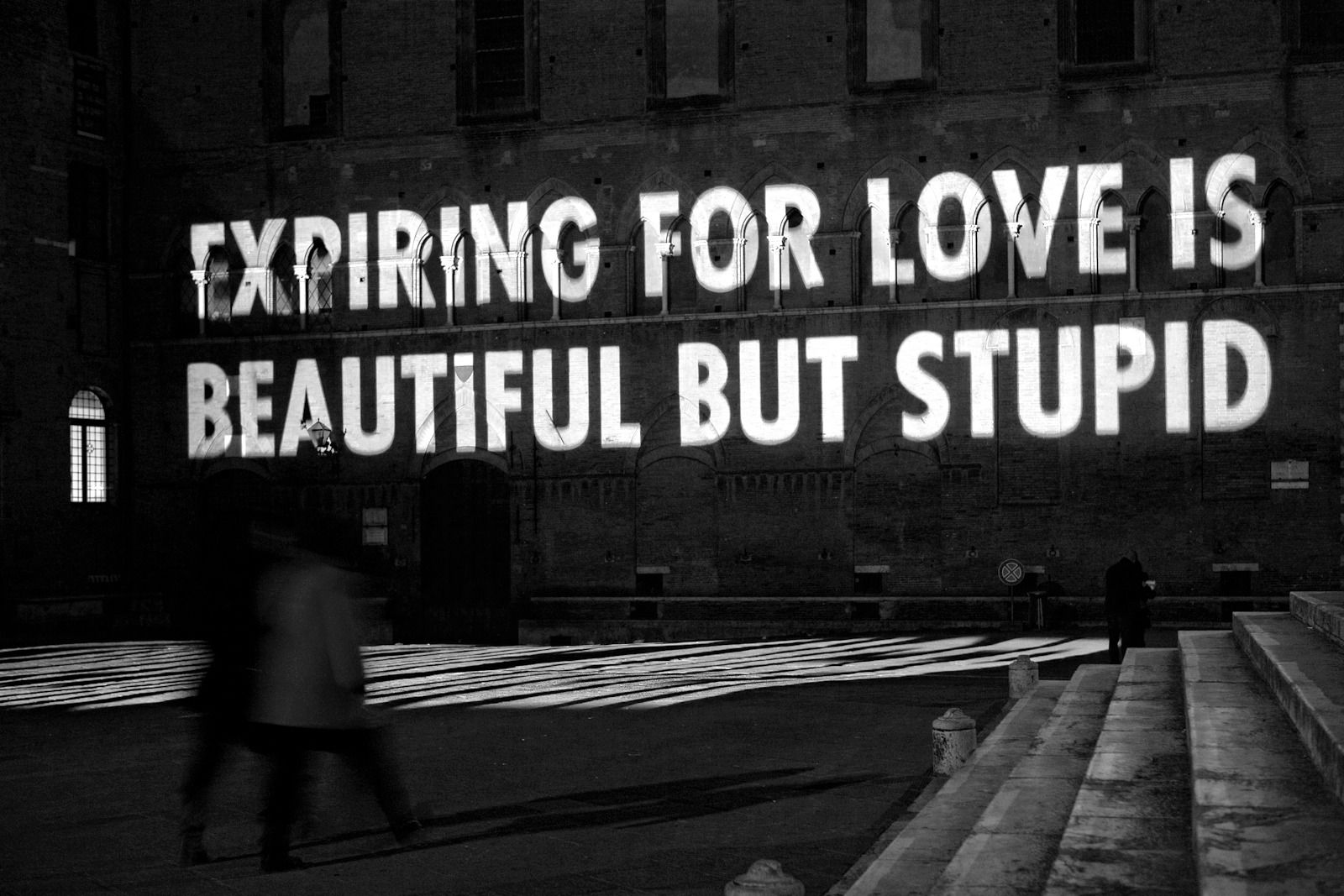
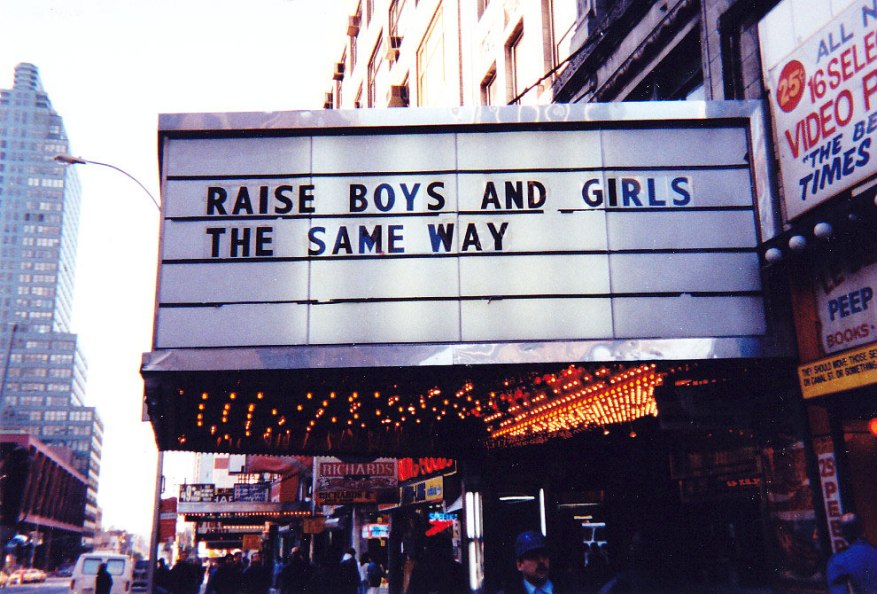





David and Jackson
I'm morbidly fascinated by the fact that David Smith died about 10 years after Jackson Pollock died; both perished in automobile accidents. After learning this little tidbit while I was researching David Smith, I found myself wondering about the other similarities between them. Both artists shared an admiration for Picasso, attention to the surrealists, attended the Art Students League in New York (although ALL four of the artists I researched attended this same school so....), and more. Pollock was more about drip painting while Smith favored constructing and scoring steel; imagine if both artists had combined these two techniques for a joint project....what would have they created?
Robert and Jasper
As Maansi said in her presentation, Jasper Johns and Robert Rauschenberg frequently collaborated and Rauschenberg taught Johns a great deal. Their friendship is one of the greatest in modern art. What I find interesting is how different their personalities were...Johns was a shy person who rarely gave interviews. Rauschenberg was exactly the opposite; very social, very energetic. While they apparently clashed in private sometimes, they (of course) brought the best out of each other in the studio. I can totally see how different their personalities are in both artists' respective artwork; Rauschenberg's spontaneous nature shines through the colorful pop art images on his pieces while Johns' style was a little more slow and deliberate. He tended to obsessively repeat themes which I think is pretty cool because there was a purpose behind this and it showed how intensely focused he was as an artist and as a person in general.
Louise (Bourgeois, not Nevelson)
So I sent my presentation notes in essay form to Ms. Quinet but there are still things I learned about Louise Bourgeois and the other artists that I didn't get to talk about in my notes/essay. Like Salvador Dali, Louise Bourgeois had daddy issues as well. When Louise was a little girl, her father had an affair with her English teacher/Nanny while her mother knew about it all along. This betrayal really affected Louise, so much so that she carried this pain with her into adulthood. It also inspired her as an artist; Louise frequently used the spider as a symbol for her mother in her art. The spider apparently represents her mother's perseverance and nurturing disposition. Check out Spider (1997) and Maman (1999) if y'all want some references.
Why do we care about Pollock?
One of the most frequent critiques of contemporary art is aimed at Jackson Pollock, and often goes somewhere along the lines of "anyone could do this, so why should I be interested in it?"
I think the most simple answer is that sure, almost anyone can splatter paint on a giant canvas, but not everyone would take it as seriously as Pollock. If you look at one of his works, you aren't seeing the product of an extremely bored Sunday afternoon where he submitted to splatter painting due to sheer lack of talent for anything else. Really what you are seeing is the product of an intricately and sponatiously choreographed process. Each drip, splash, and spatter was considered by Pollock, and in every motion he felt the creation of art, which is really what creates the experience of seeing a Pollock.
I think the most simple answer is that sure, almost anyone can splatter paint on a giant canvas, but not everyone would take it as seriously as Pollock. If you look at one of his works, you aren't seeing the product of an extremely bored Sunday afternoon where he submitted to splatter painting due to sheer lack of talent for anything else. Really what you are seeing is the product of an intricately and sponatiously choreographed process. Each drip, splash, and spatter was considered by Pollock, and in every motion he felt the creation of art, which is really what creates the experience of seeing a Pollock.
Earth Artist Michael Heizer
I think Earth Art is very cool in how ambitious and unique many of the works are and one artist in particular who I think is interesting is American artist Michael Heizer. I read this New Yorker article about him a while ago, and if you're interested in Earth Art it's a good read:https://www.newyorker.com/magazine/2016/08/29/michael-heizers-city. Heizer is a relatively well-known figure in Earth Art whose works, like others in the movement, are often on a grand scale and use natural materials like rocks. One of his first works in this genre was Double Negative (1970), which consists of two massive trenches/gaps dug into the side of a mesa using dynamite in a mesa in the Nevada desert. The work creates an interest effect of a sort of gash in the Earth where a massive amount of dirt is missing. It's also difficult to reach as the cliff where it is located and viewable from is miles away from the nearest town in the middle of a desert. Another cool piece of his that I have actually seen in person is Levitated Mass, which is installed at the Los Angeles County Museum of Art, which is basically a giant rock that Heizer transported from a nearby mountain range and placed over a concrete trench that viewers can walk under. I'll put pictures of both of these works below so you can see what they look like, but in person Levitated Mass is cool to see as you can really feel the weight of the rock overhead when you walk underneath it. Lastly, his most impressive work in terms of scale, which he is still working on, is a monumental sculpture also in the Nevada desert called City. It's inspired by ancient monument cities and earthworks and is over a mile long. It consists of various giant slabs, pyramids, and mounds. Heizer has been working on City for many years, living in the desert and using bulldozers and other machines to construct the work, and it is scheduled to open in the next few years. There aren't many pictures of the site as it's closed to the public for now, but you can see some of them below too.
Surrealist Literature
When I presented on surrealism I talked about how the artistic movement was not limited to visual arts, but was really led by literary figures like Andre Breton, who really defined the movement with his Surrealist Manifestoes. Surrealist literature applies the same concepts that the artists I talked about used in their works. Specifically, emphasis is placed on the subconscious, automatism, and the importance of dreams over reality. Automatic works attempted to just let the subconscious write whatever it was thinking, free from conscious regulation. I read an excerpt from Les Champs Magnétiques, by Breton and fellow Surrealist Philippe Soupault, which is widely cited as the first work of surrealist literature and which follows this style, but I thought I'd post a few more quotes from surrealist works. I think this style is interesting in how it tries to apply these ideas, and it does create an interesting, almost poetic style. However, with the lack of real narrative and focus, I can see why surrealist literature could be difficult to read for an entire novel. Perhaps that is why the surrealist works of visual arts remain more popular and widespread today.
"It was the end of sorrow lies. The rail stations were dead, flowing like bees stung from honeysuckle. The people hung back and watched the ocean, animals flew in and out of focus. The time had come. Yet king dogs never grow old – they stay young and fit, and someday they might come to the beach and have a few drinks, a few laughs, and get on with it. But not now. The time had come; we all knew it. But who would go first?"
"Someone just died but I’m still alive and yet I don’t have a soul anymore. All I have left is a transparent body inside of which transparent doves hurl themselves on a transparent dagger held by a transparent hand. I see struggle in all its beauty, real struggle which nothing can measure, just before the last star comes out. The rented body I live in like a hut detests the soul I had which floats in the distance. It’s time to put an end to that famous dualism for which I’ve been so much reproached. Gone are the days when eyes without light and rings drew sediment from pools of color. There’s neither red nor blue anymore. Unanimous red-blue fades away in turn like a robin redbreast in the hedges of inattention. Someone just died,—not you or I or they exactly, but all of us, except me who survives by a variety of means: I’m still cold for example. That’s enough. A match! A match!"
"It was the end of sorrow lies. The rail stations were dead, flowing like bees stung from honeysuckle. The people hung back and watched the ocean, animals flew in and out of focus. The time had come. Yet king dogs never grow old – they stay young and fit, and someday they might come to the beach and have a few drinks, a few laughs, and get on with it. But not now. The time had come; we all knew it. But who would go first?"
"Someone just died but I’m still alive and yet I don’t have a soul anymore. All I have left is a transparent body inside of which transparent doves hurl themselves on a transparent dagger held by a transparent hand. I see struggle in all its beauty, real struggle which nothing can measure, just before the last star comes out. The rented body I live in like a hut detests the soul I had which floats in the distance. It’s time to put an end to that famous dualism for which I’ve been so much reproached. Gone are the days when eyes without light and rings drew sediment from pools of color. There’s neither red nor blue anymore. Unanimous red-blue fades away in turn like a robin redbreast in the hedges of inattention. Someone just died,—not you or I or they exactly, but all of us, except me who survives by a variety of means: I’m still cold for example. That’s enough. A match! A match!"
Is Instagram the new way to publish Art?
- Technology has given society countless new ways to connect, watch, publish and make money. One of the biggest apps today, instagram, has given artists a simple way to get their work in the world . Instagram is used by nearly everyone with a cell phone, on average 95 million photos and videos are posted to Instagram per day. Artist can simply post a work of art and tag a few hashtags to their post and instantly the algorithms behind Instagram will get that specific photo in front of millions of users. Not only can Instagram bring an artist from being a less to being a social medi star, but it can also be a source of making money. Certain companies ask Instagram stars to sponsee their post, meaning they tag the companies name and have some sort of description and the artist can generate currency from this platform, so what’s the issue with Instagram? You can easily publish art and even make money from a free post? What the issue is is that it does not have the same level of class or esteem as let’s say, a piece placed in a musesuem. What do you think? Is Instagram a valid way to publish art? Or is it just a way for the common people to feel like artist?
What kind of architecture is there today?
As I researched my section, which was architecture, for the post impression presentation l began to Wannsee, what kind of architecture is there today? Do we have a distinct style? Or is there just a melting pot of different styles? I find today that there is no specific genre or style, it is all dependent on the architect behind the building. For example, each architect that I presented on (Wright, Le Corbuiser, and Rhoe) all began movements, never really followed one. My philosophy is that architects pick and choose from a plethora of different charcacistics from different styles and then lit this together and create their own, hence each arichtect jas their own style.
The fault, dear Brutus, is not in our stars / But in ourselves...
I thought Barbara Kruger was a pretty fascinating artist to learn about because her criticism is so direct and pointed…and controversial. For example, the words from her poster for the 1989 Women’s March on Washington went up on a billboard a year after the march; only twelve hours later, an anti-abortion group put up an image, on the opposite billboard, of a fetus (very, very tiny but developed enough to resemble a small human). And not only did she create that picture of Donald Trump; she was also part of the inauguration boycott. So this is a woman who really doesn’t JUST talk. There was also quite an interesting lawsuit over the “Supreme” brand name/logo. I’m not going to post Kruger’s comment, but you can find it here at the bottom of the page: https://en.wikipedia.org/wiki/Barbara_Kruger#Teaching
Finally, below are some of the works we didn’t talk about but which really struck me:
http://www.arthistoryarchive.com/arthistory/feminist/Barbara-Kruger.html




Finally, below are some of the works we didn’t talk about but which really struck me:
http://www.arthistoryarchive.com/arthistory/feminist/Barbara-Kruger.html
Subscribe to:
Posts (Atom)
